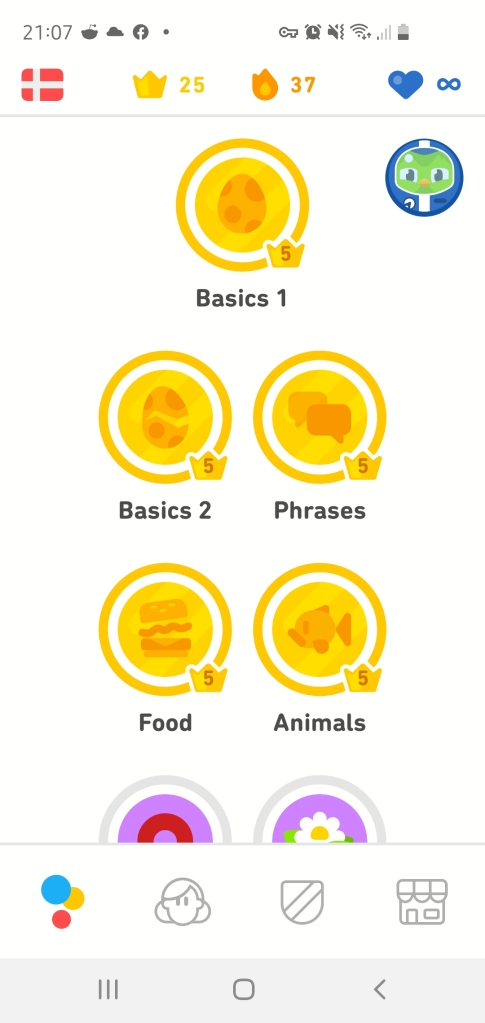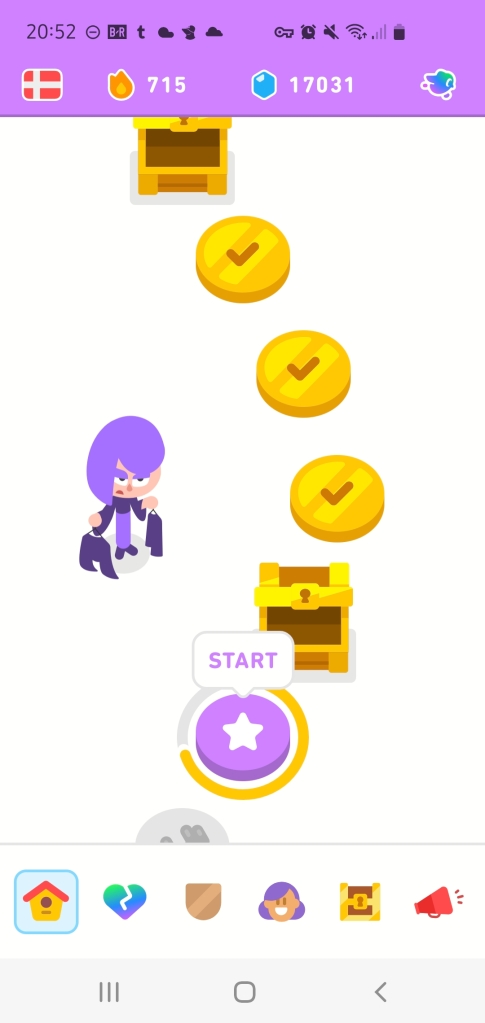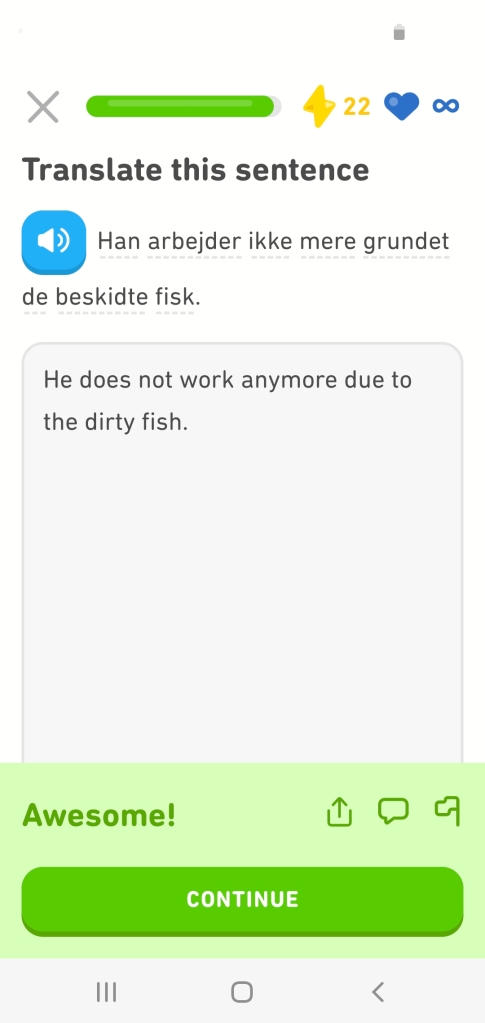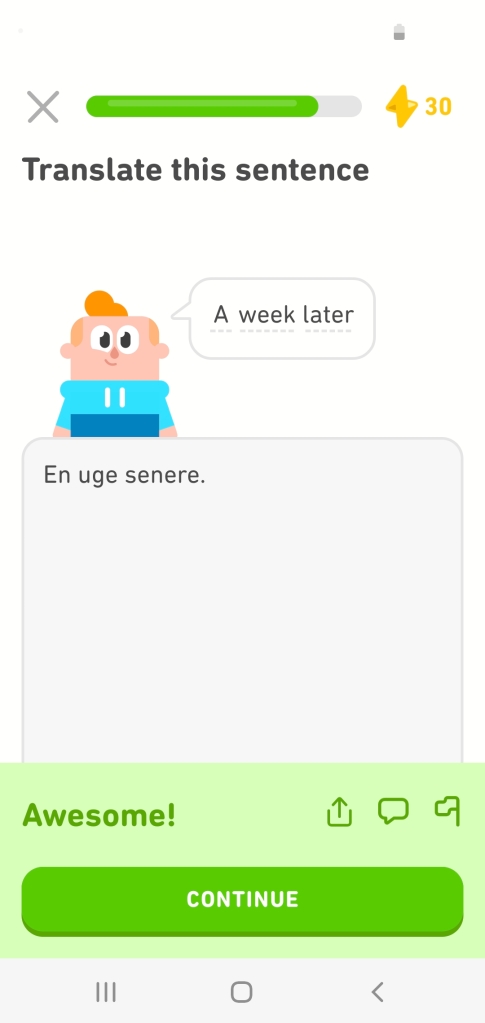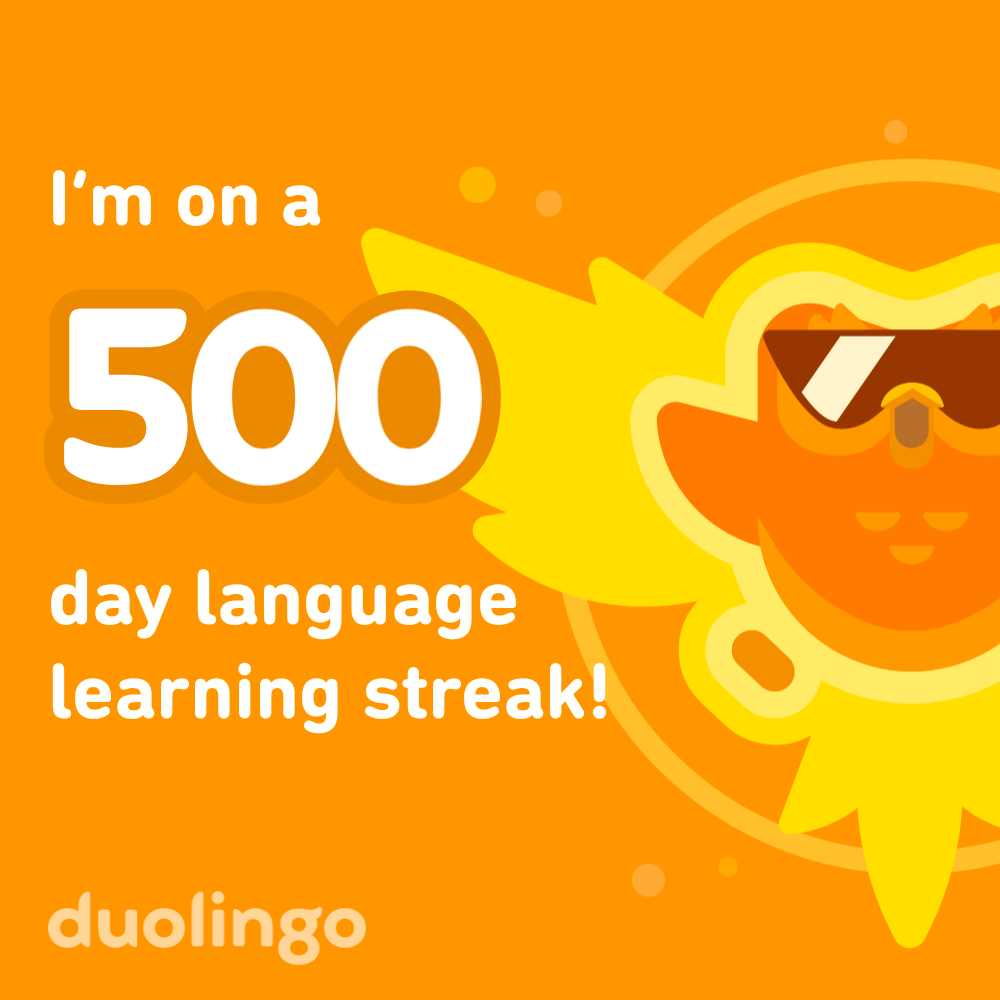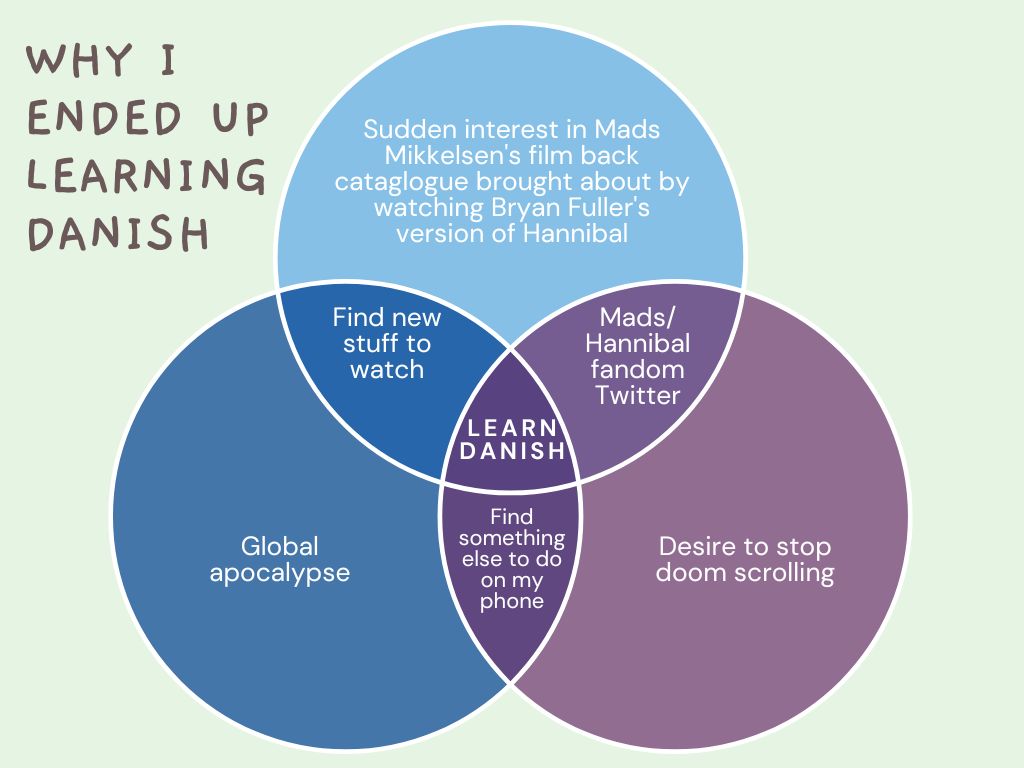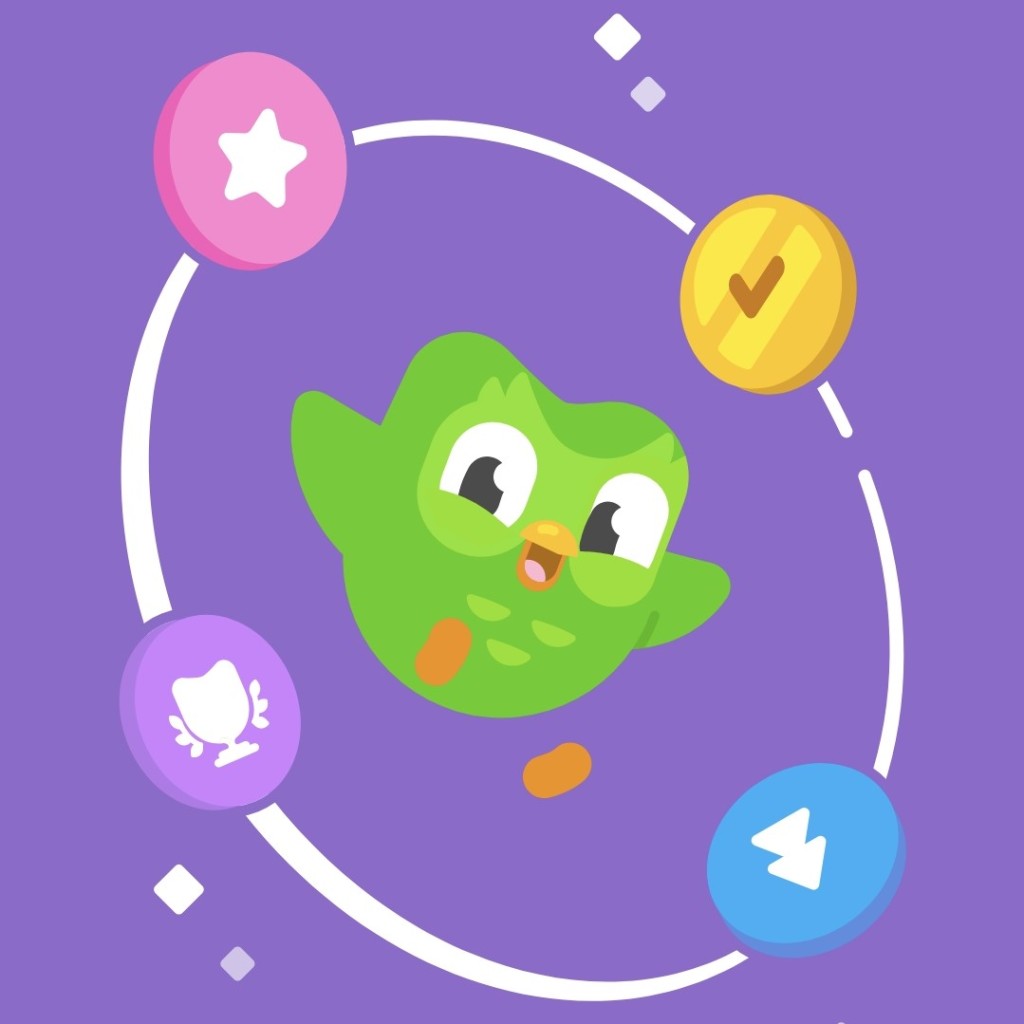
What a difference eight and a bit months can make, eh? The last time I wrote about learning a new language (Danish/dansk), I was happy with how my first 500 days had gone. Much of this had taken place using the language app Duolingo but after a huge user experience update started to be rolled out over the past few months… I’m no longer happy with Duolingo. And Tuesday, 1 November 2022, sees the update I’ve been fighting with for the past month be rolled out to all users.
I hate the Duolingo update. It sucks. Here’s why.
1. I’ve lost control over how I learn within the app
While progress in Duolingo was previously only partly held back by how much progress you had made in the app, you could pick your own path through learning in the “learning trees”.
It’s not obvious from the above screenshot, but because I had completed food (for instance) I could choose which one of the next two units I focused on next. Often, I would focus only on one unit at a time and then move on to the next. Sometimes I would mix it up if I was dealing with two units that I found equally as hard or as easy.
Now, I’m forced to walk a completely linear path with revision of older lessons done by “personal learning” chosen for me by the app and set as an entire node on the path. Whereas before, I could just go back to an earlier unit quite easily and be rewarded reasonably well in gems for my time and effort. I can go back now to earlier units, but the rewards for doing so are far smaller payouts of gems.
I really don’t like this lack of choice.
2. The update messed up where I had gotten to
Because I had been learning, before the update, across several different modules, there was no way for the new Duolingo update to replicate this learning experience due to its linear nature. So, where I had made good progress with past tense but hadn’t completed it, Duolingo decided to discard all that progress I had made.
It did this just as I was getting used to signs of whether a word was being used in the past tense or not. How it then chose to throw me into learning made what I had learned already, confusing to recall and subsequently all over the place.
Also, because of how different the new setup is, I have no clear idea how I’m progressing now because it is so different.
3. Progress looks like it will take longer than before
The long wandering path of learning now sees me facing 45 units filled with ten individual modules/nodes of learning. Whereas before, the modules were split over far fewer levels.
For me, having to deal with what looks like a long singular journey of learning is more intimidating and off-putting than what was offered by the previous visualisation technique, which showed branches and shorter times to reach big milestones.
4. Where have all my writing exercises gone?
Throughout the previous version of the app, at least on the Danish course, I would be regularly asked to write various translations between English and Danish. While speaking is important in learning any language, I was trying to enjoy Danish media, so learning to read and write was also important to me.
Since the update, I only get full writing exercises during those “personal learning” segments and then it’s not very many and doesn’t switch between translating and writing.
Here are some examples of the older translation exercises I regularly did.
I was hoping to eventually read the Danish translation of Stephen King’s Carrie, but the removal of frequent translation exercises in Duolingo has me thinking that Duo isn’t the place to help me learn those skills anymore.
5. My Duo outfits are gone
Before the update, you could buy outfits for Duo, Duolingo’s mascot, to wear. And I bought every single one of the outfits available using the app’s in-app gems. They cost several tens of gems to several hundred.
Now the outfits are gone. Every single one.
This wouldn’t be so much of an issue if it were not for the fact that I didn’t have the in-app cost of those outfits refunded. Instead, the gems that the outfits cost are lost to the update… an update that has been focused on making gems scarer than they were before. Why?
6. The update is clearly about driving microtransactions, a.k.a. in-app purchases
I was already a subscribed user of Duolingo before this update. (Earlier this year, subscriptions went from being called Duolingo Plus to being called Super Duolingo. It came with a new colour scheme for subscription elements.)
So, as a subscriber who paid out £80.39 for a subscription last December, I’m not exactly keen on giving Duolingo more of my money during a subscription period.
And things were working fine. I would be getting something like several dozen gems a day, along with 30-50 XP, depending on much time I spent on the app doing lessons (usually around 15 minutes). I had a daily learning goal I set in the app. So, I would say that I wanted to get something like 50 XP a day, and I’d be given so many gems depending on much progress I’d made towards this goal.
(XP is used in the “league” Duolingo has, with Diamond being the top league. The more XP you gain per week, the higher the chance you have of progressing up the league.)
With the update, XP payouts are lower per module than they were before, and you gain fewer gems for completing learning goals that aren’t set by you but are, in fact, set by the app. That’s right, self-set learning goals are gone, so the update has taken away yet another element of user control.
But how does this all equate to driving microtransactions?
Two things:
- Bundles to buy gems and time for a timed exercise challenge using actual money are now featured prominently in the app when you go into the shop tab.
- In Duolingo’s 2022 Q2 letter to shareholders, they talked about using another feature that’s being rolled out with the update, “Side Quests”, and using it to “increase revenue by encouraging more people to buy gems.”

(Thanks to Duo_is_sad on Twitter for pointing out this bit of the shareholders’ letter.)
I don’t have access to side quests yet. This brings me to my final point.
8. Duolingo focused on finding ways to gain more money rather than improving people’s learning experiences
Duolingo is ignoring, it seems, nearly any and all criticism they receive about this update. I get trying to make more money. They have shareholders, after all.
But I hate the cheek of them acting like it’s good for users:
Duolingo has carried on like it’s business as normal since the update started to be rolled out.
And I hate that they invested time and money in this update, invested my subscription on it, on stuff that hasn’t made my learning experience better. Because ignoring the linear path crap for a moment, as a Danish learner, I have far fewer features than someone learning French.
Danish subscription learners, along with many other subscription learners learning different languages, are being charged the same subscription costs as someone learning languages that are far more fleshed out.
Features Danish doesn’t have:
- Stories (where you walk through a conversation and type appropriate replies). Stories were added to iOS in 2019.
- Grammar tips (tips about grammar) or lessons that call out aspects of grammar.
There might be more Danish doesn’t have but I don’t have time to go starting up a dozen different language courses in Duolingo to find out. As I summarised this on Twitter:
I have cancelled my annual Duolingo subscription
Once my subscription runs out in December, I won’t be renewing it. I’ve already set it to not renew. I’m working on moving away from such a gamified learning experience when it comes to languages.
Currently, I’m looking at Memrise and Babbel to take over as my main language-learning apps.
Ideally, I’d also take part in Danish lessons with actual Danish-speaking humans, but as I’m about to have a baby, that needs to wait. There’s nowhere in Cornwall, England, that seems to be offering in-person courses on Danish, so I’d likely have to look for online courses run by UK FE or HE institutions.
I’m not going to give up on Danish. I’ll have been learning Danish for two years later in November. It’s just clear to me that Duolingo isn’t worth my time to keep it as a daily fixture in my life, as it’d rather I bought gems than learn in a way that suits my needs.
EDIT: If you’re also peeved by the update there is a Change Petition you can sign about it.

